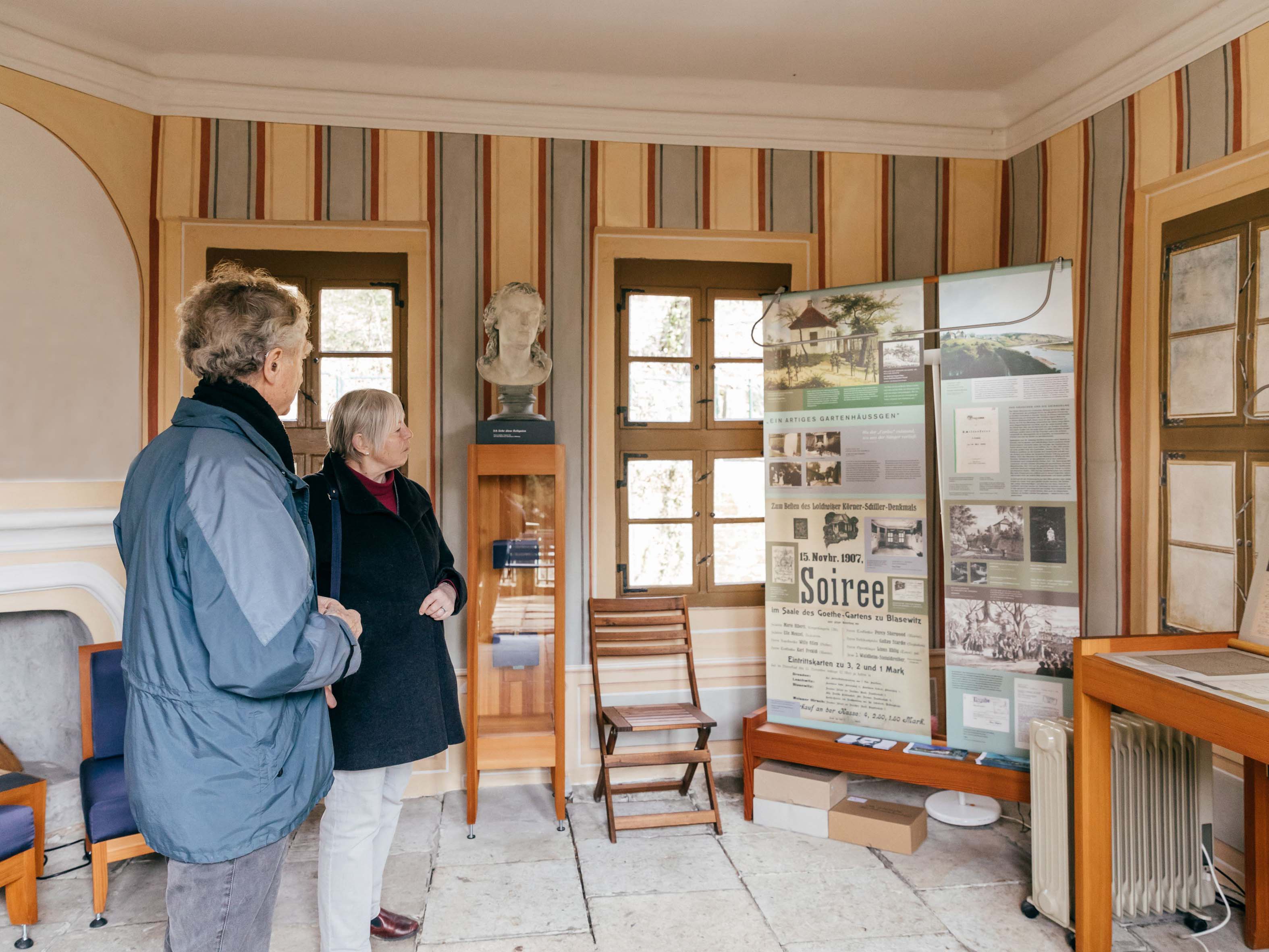
The smallest museum in town
Dresden's Schillerhäuschen is home to the city's smallest and probably most charming museum. To this day, the Loschwitz vineyard cottage is the central place to commemorate Friedrich Schiller's stay in Dresden. The small exhibition tells of this with the help of documents and pictures, including manuscripts, excerpts from Schiller's poems written in Dresden and reproductions of paintings. Also on display are Schiller relics that were on show in the Körner Museum in the Innere Neustadt district before it was destroyed. The exhibition also provides information on the circle of artists surrounding Schiller and the patron of the arts Christian Gottfried Körner. Since 1913, a relief by Martin Pietzsch and Oskar Rassau on the retaining wall on the opposite side of the street has also commemorated the poet and his friendship with the Körner family.
We are part of the network of Museums in the City of Dresden.

Friedrich Schiller
in Dresden
Friedrich Schiller (1759 – 1805) had been acquainted with the lawyer, publisher and patron of the arts Christian Gottfried Körner since 1784, who appreciated Schiller's dramas and helped him out of a financial emergency. After Schiller had already stayed at Körner's residence in Leipzig several times in the summer of 1785, he soon accepted his invitation to Dresden. Schiller, who was still penniless at the time, lived here from 1785 to 1787 as Körner's guest and enjoyed his hospitality on his vineyard. Here in Loschwitz, Schiller found peace and inspiration. He worked on the drama »Don Karlos«, the story »Der Geisterseher« and wrote the ode »An die Freude«. His financial situation subsequently improved: Schiller was appointed professor in Jena in 1789 and court councillor the following year.

History of the house
The Schillerhäuschen is located halfway up the Dresden Elbe slopes, around 500 metres north of the Blue Wonder. Its location used to be part of Körner's vineyard, which stretched up the hill from Körnerweg on the Elbe.
In 2005, to mark the 200th anniversary of Schiller's death, the pavilion-like garden house in the Loschwitz district in the east of the Saxon state capital, which was in danger of falling into disrepair at the time, was structurally secured.
Thanks to the great support of many volunteers, the Schiller cottage has been open to visitors in the summer months ever since. In 2016, the association Schiller & Körner in Dresden e. V. was founded, which is dedicated to maintaining the Schiller Cottage and communicating the life and work of Friedrich Schiller.























